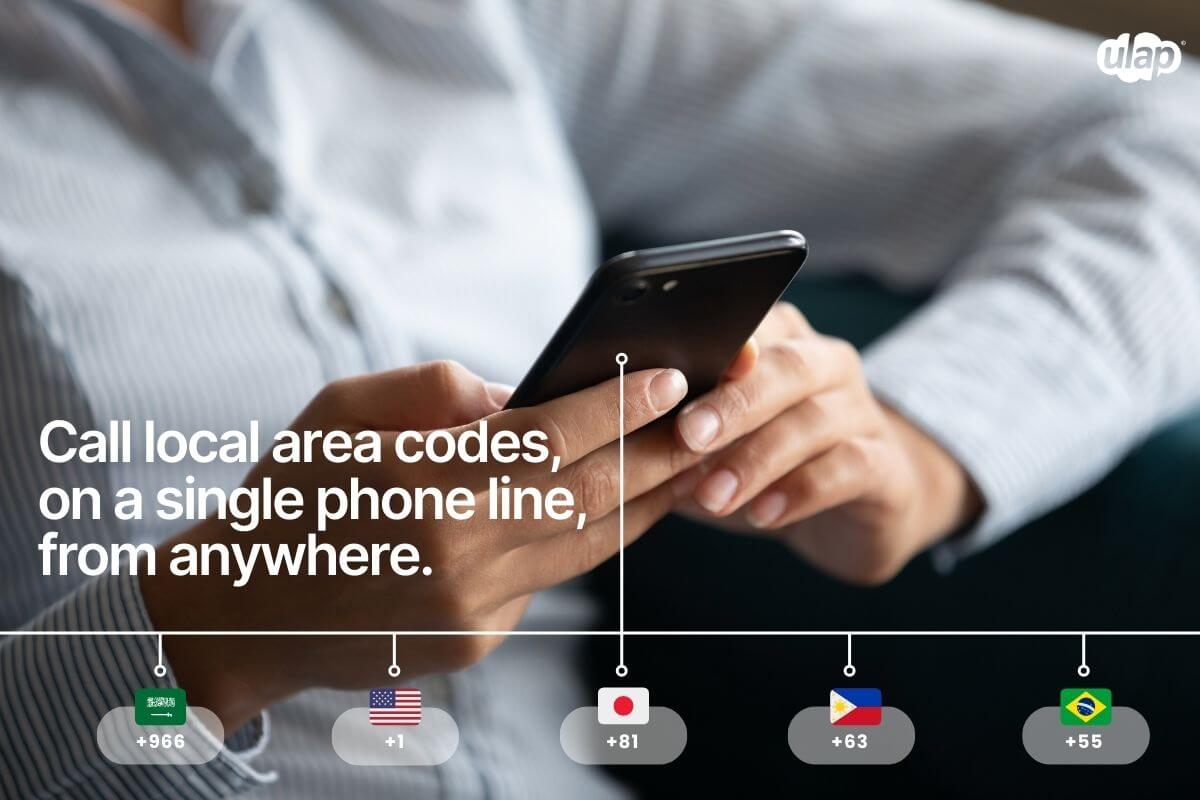Why are call centre phone system features important for your business?
A call centre phone system is a phone setup made for handling a larger number of customer calls, both incoming and outgoing. It’s what businesses use when they have a team of people answering, helping customers, or making sales calls.
This kind of phone system is more advanced than a regular office phone. It helps direct calls to the right person, keeps track of wait times, recording calls for training, and even connects to customer information systems so agents know who they’re talking to.
It’s more than just a phone line.
Even in a world full of apps, emails, and chatbots, customers still turn to phone calls when they need help fast (especially when they’re feeling urgent). Voice support remains one of the most personal and trusted ways to connect with a company as customers expect real empathy, fast answers, and real solutions.
That’s why your call centre is often the face of your company.
A bad call experience with long waits, same repetitive stories, or the feeling of being rushed can damage trust and push customers away for good. On the other hand, a helpful, friendly call builds loyalty, spreads positive word of mouth, and drives growth.
Modern call centers go beyond handling calls.
Today’s call centres improve call experience with tools like CRM, chats, feedback tools and AI. This helps your team work faster and service customers better.
There are many types of call centre software, with different unique features and strengths. Some are built for outbound sales calls, other for handling inbound support. Some focus on voice, while others bring in messaging, email, or even social media.
Let’s take a look at the 5 essential features that make a call center system truly effective for your team and for your customers.
1. Advanced Call Features
No matter the size of your team, there are some call centre phone system features that are indispensable. These are the tools that make sure your calls go to the right place, your agents aren’t overwhelmed, and your customers get the help efficiently.
• Call Routing
Call routing is the configuration that decides where each call goes. Instead of every call going to the same line or agent, the system uses set rules to send the call to the most appropriate person or team. For example, routing can be based on:
- Time of day (e.g. different agents for day and night shifts)
- Customer’s location
- Customer’s preferred language
- Call agent expertise
Important to know: If no one is available when a call is routed, that’s where call queueing comes in: the system holds the call in line until someone can answer.
• IVR (Interactive Voice Response)
IVR is the automated menu that customers hear when they call. It gives them options, like “Press 1 for billing, 2 for technical support,” and can sometimes understand spoken responses too.
It’s helpful because it can:
- Filters calls before they get to an agent
- Collect basic info like account numbers or reasons for calling
- Offer self-service for simple tasks (e.g. checking a balance or tracking a shipment).
• Call Queueing
When all agents are busy, the system doesn’t just drop new calls, it can place them in a call queue. Call queueing manages this line and can do things like:
- Tell callers how many people are ahed of them
- Give an estimated wait time
- Play music or messages while they wait
- Offer the option for a callback instead of staying on hold
This is especially important during peak hours. A clear, polite queueing system helps reduce frustration and keeps customers from hanging up.
• Call Recording
Call recordings play a key role in managing customer information and improving service quality. They play a role in:
- Training: New agents can learn by listening to real examples of good service
- Quality control: Managers can review calls to make sure company standards are being met
- Dispute resolution: If there’s a disagreement about what was said, a recording can clear things up.
Most systems let you securely store recordings, in accordance to region and industry-specific regulation such as GDPR and HIPAA, and allow you to search by date, agent, or caller.
• Voicemail and Missed Call Handling
Not every call gets answered right away, especially for call centres that don’t run 24-hours. That’s where voicemail and missed call handling come in.
A good system may:
- Let customers leave a message when no one is available
- Capture missed call information, like phone numbers and time of call
- Allow agents to follow up quickly or schedule a callback.
This helps ensure no customer is forgotten and that every call gets a response, even if it’s not right away.
2. Agent Tools for Productivity and Performance
Great customer experience doesn’t just depend on how fast someone picks up the phone, it’s also about how well the agent is supported behind the scenes. When agents have the right tools, they can focus on solving problems instead of dealing with slow systems, repeating the same steps, or switching between too many apps.
These features help reduce friction in daily tasks, allowing teams to work faster and more confidently, whether they’re in the office or remote, without interrupting the flow of work.
• Softphones and Mobile Apps
Softphones are apps that let agents make and receive calls using devices like computers or mobile phones, without a desk phone required. This is especially useful for remote teams or agents who move between locations, but also opens up the opportunity to connect with CRM tools, track calls automatically, and sync across platforms.
• Call Monitoring, Whispering, and Barging
These tools give supervisors the ability to support agents during live calls. Monitoring lets them listen in without being heard, whispering allows private coaching during a call, and barging lets them jump into a conversation if needed. This is helpful for real-time training, managing sensitive situations, or stepping in when a situation escalates.
• Predictive Dialer
A predictive dialer automatically calls numbers from a list and connects agents only when someone picks up. This eliminates downtime spent listening to busy tones or unanswered calls. It’s especially efficient for outbound campaigns, sales, or feedback collection where speed and reach are priorities.
• Skills-based Routing
As we had earlier touched on in call routing, skills-based routing ensures that calls are sent to agents who have the right knowledge or training for the issue. This helps avoid unnecessary transfers and gives customers faster, more accurate answers. For agents, it means handling calls they’re prepared for, which improves both confidence and productivity.
• Call Notes and Disposition Codes
After each ca,, agents can enter notes or assign a code that sums up the outcome like “resolved,” “escalated,” or “follow-up needed.” This makes it easier to track customer interactions, keep records consistent, and support better follow-up across teams.
3. Customer Experience Features
From the moment someone dials in to the moment they hang up (or get a follow-up), small details in their experience shape how they feel about your brand. These call centre phone system features are designed to reduce friction, offer more control to the customer, and help your team respond quickly and clearly.
• Self-Service Portals
For common questions, customers may be provided with the right answer more efficiently. A self-service portal allows them to check their order status, find billing info, or troubleshoot simple issues without needing to call.
While this feature is more common in digitally integrated call centre software, this feature reduces the number of basic calls coming through and frees up agents for more complex tasks.
• Auto Attendants
An auto attendant is like a digital receptionist. It greets callers and directs them to the right department or extension using a simple menu. This is similar to an IVR, but may be operated by a human operator, to keep calls flowing efficiently. It is especially useful for companies with multiple teams or locations.
AI auto attendants are becoming increasingly popular, not just for voice calls but also as a potential first point-of-contact in a self-service portal.
• Escalation Management
When a problem can’t be solved on the first try, the system should make it easy to escalate the issue to someone with more authority or expertise.
As with features such as call monitoring, whispering and barging, escalation management refers to the system’s wider capability to transfer customer information smoothly with the right context from previous conversations. A clear escalation path avoids repeat explanations and helps rebuild trust in tricky situations.
• Post-call Surveys
After a call ends, the system prompts customers to answer a quick survey by phone, email, or SMS. These surveys help businesses gather real feedback on agent performance, wait times, and customer satisfaction.
Managers use the results to spot patterns, reward strong performers, and identify areas that need attention.
4. Analytics, Reporting, and Quality Monitoring
Behind every good call center is a clear understanding of what’s working, and what isn’t. Analytics and reporting tools give managers visibility into how the team is performing and how customers are interacting with the system.
Quality monitoring features help keep service levels consistent and ensure that agents are meeting expectations. Together, these tools support continuous improvement, better decision-making, and more efficient operations.
• Real-time Dashboards
Real-time dashboards show live data as calls are happening. Managers can see things like call volume, wait times, agent availability, and how many people are in the queue. This allows supervisors to make quick adjustments, for example, by reassigning agents or stepping in during busy periods before problems build up.
• Performance Reports
In addition to live dashboards, most systems include reports that show trends over time. These might include average handle time, number of calls per agent, first-call resolution rates, or customer satisfaction scores.
These reports help teams measure progress, plan staffing needs, and identify areas that need improvement.
• Call Recording and Evaluation
Recording calls is an essential documentation tool that requires careful and compliant management. It’s also a tool for training and coaching, so managers can review calls and score them based on criteria that are critical to the company’s reputation and customer experience management.
This can include tone, problem-solving, script use, or customer satisfaction. It supports ongoing feedback and helps agents improve with real examples.
• Speech Analytics and Sentiment Detection
Sophisticated systems include AI features that scan call recordings (or live calls) to identify keywords, emotional tone, or signs of customer frustration. This helps flag potential issues before they become bigger problems, and it can also uncover patterns, like common complaints or phrases that lead to successful resolutions.
5. Advanced and Integrated Capabilities
As call centres evolve, so do the tools that support them. Many modern systems now include advanced features that connect with other business platforms or use automation and AI to boost performance. These tools help reduce repetitive work, improve consistency across channels, and make the overall experience smoother for both agents and customers.
• AI Assistants and Virtual Agents
AI-powered tools can handle simple customer questions automatically, like store hours, order updates, or resetting a password. These virtual agents use natural language processing to understand requests and respond clearly, without needing a human on the line. When the issue is too complex, the AI can hand things off to a live agent, often with context already attached.
• Text-to-Speech and Voice Recognition
Text-to-speech allows systems to read out responses to customers using natural-sounding voices, while voice recognition helps the system understand what callers are saying. These features make self-service tools more flexible, more accessible, and easier to use, especially for customers who may not want to navigate with buttons.
• CRM and Business Tool Integration
Call centre system features can allow for integration with customer relationship management (CRM) tools, email platforms, ticketing systems, and more.
This means agents don’t need to switch between apps. They can see customer history, open cases, and account details all in one place. This saves time and helps agents give more personalised service.
• Open APIs and Workflow Automation
For companies with specific needs, open APIs make it possible to connect the phone system with other internal tools or workflows. This enables custom automation, like sending follow-up emails or logging notes directly into a database. It’s especially helpful for larger teams or businesses with unique internal processes.
• UCaaS and Omnichannel Integration
Many providers now offer combined platforms that handle voice, video, messaging, and more under one system known as UCaaS (Unified Communications as a Service).
When this is combined with call ecentre phone system features, businesses can manage all conversations from phone calls to web chats in one place. This helps teams stay organised and offer a consistent customer experience across every channel.
How to Choose the Right Features for Your Business
Not every call centre needs every feature, although the list we have provided here represent the most popular features for modern enterprises. The best setup depends on your size, goals, and how your team works.
A small business running a support line will need something very different from a global company handling potentially thousands of calls a day.
Before choosing a system or upgrading what you have, it helps to ask a few practical questions.
What kind of calls do you handle?
Start with the basics. Are you receiving calls (inbound), making them (outbound), or both?
- Inbound-heavy teams may need features like IVR, call queueing, and skills-based routing to keep things efficient.
- Outbound teams may benefit more from predictive dialers, CRM integrations, and call tracking.
Do your agents work in one place, or from anywhere?
If you have a remote or hybrid team, look for features like soft phones, mobile apps, and cloud-based dashboards. These keep agents connected without needing physical desk phones or complex hardware setups.
What matters more to your business: speed, quality, or personalization?
If speed is a priority, focus on routing tools, callback options, and automations.
If call quality matters most, invest in call recording, monitoring, and evaluation tools.
If personalised service is key, make sure your system integrates smoothly with your CRM and support software.
How do your customers like to get help?
Some customers want to call. Others prefer chat, email, or even social media. If you’re supporting multiple channels, look for systems that offer omnichannel or UCaaS + CCaaS integration so everything can be managed in one place.
What’s your budget, and how fast are you planning to grow?
You don’t have to buy every feature at once. Many systems let you start small and add more later. Look for options that are scalable, meaning they can grow with your team, rather than looking you into something that doesn’t adapt.
Next Steps: Building the Right Call Center Setup
Choosing the right call centre phone system features is important, especially when you understand how your team works, how your customers want to connect, and how you plan to grow.
Start with what matters most to your business right now. Build a system that supports your agents, gives your customers a smooth experience, and gives you the flexibility to adapt as things change.
Need help figuring out what setup is right for you?
We support voice as a part of a full-stack communication approach, from advanced call routing to telephony integration with your preferred call centre platforms.
If you’re looking for a solution that’s simple to set up, scalable, and built for real-time performance across global teams, contact us. We support platforms space including Zoom Contact Center, Microsoft Teams, NICE CXone, and others.
For more centralised control over your global telephony, native solution ULAP Voice, with full integration capabilities between your regional telephony and any platform of your choice.
We’re happy to walk you through your best recommendation and support your next phase of growth.










